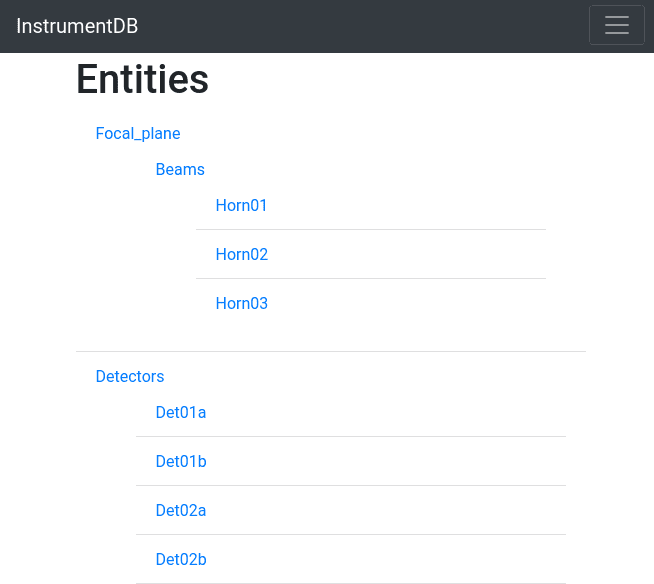InstrumentDB
A RESTful database to manage specifications of complex scientific instruments
Explore the docs »
View Demo
·
Report Bug
·
Request Feature
Table of Contents
About The Project
Built With
Getting Started
To get a local copy up and running follow these simple steps.
Prerequisites
You must have Python 3; it is advised to create a virtual environment before installing InstrumentDB.
Installation
-
Clone the repo:
git clone https://github.com/ziotom78/instrumentdb.git && cd instrumentdb
-
Install all the dependencies using
poetrypip install -r requirements.txt
-
Create a custom configuration file and customize it. Be sure to put some random password in
SECRET_KEY!cp .env.example .env && vim .env -
Create the database
./manage.py migrate
-
Create a superuser
./manage.py createsuperuser
-
Fire up the web server
./manage.py runserver
-
Connect to http://127.0.0.1:8000/ and enjoy!
Developer installation
Developers willing to hack instrumentdb should install Poetry. I developed InstrumentDB under Linux Manjaro and Linux Mint 20.1, but it should be usable on other platforms too (Windows, Mac OS X, FreeBSD, …).
To install Poetry, see here.
-
Clone the repo:
git clone https://github.com/ziotom78/instrumentdb.git && cd instrumentdb
-
Install all the dependencies using
poetrypoetry install
-
Create a custom configuration file and customize it. Be sure to put some random password in
SECRET_KEY!cp .env.example .env && vim .env -
Create the database
poetry run manage.py migrate
-
Create a superuser
poetry run manage.py createsuperuser
-
Fire up the web server
poetry run manage.py runserver
-
Connect to http://127.0.0.1:8000/ and enjoy!
Usage
Use this space to show useful examples of how a project can be used. Additional screenshots, code examples and demos work well in this space. You may also link to more resources.
For more examples, please refer to the documentation.
Roadmap
See the open issues for a list of proposed features (and known issues).
Contributing
Contributions are what make the open source community such an amazing place to be learn, inspire, and create. Any contributions you make are greatly appreciated.
- Fork the Project
- Create your Feature Branch (
git checkout -b feature/AmazingFeature) - Commit your Changes (
git commit -m 'Add some AmazingFeature') - Push to the Branch (
git push origin feature/AmazingFeature) - Open a Pull Request
License
Distributed under the GPL3 License. See LICENSE.md
for more information.
Contact
Maurizio Tomasi - @MaurizioTomasi2 - ziotom78{at}gmail.com
Project Link: https://github.com/ziotom78/instrumentdb
Acknowledgements
-
The LiteBIRD Instrument Model team for many ideas: Sophie Henrot-Versillé, Hirokazu Ishino, Tomotake Matsumura.
-
The ASI (Agenzia Spaziale Italiana) SSDC Team: Fabrizio Fabri, Antonio Guerra, Gemma Luzzi, Daniele Navarra, Gianluca Polenta





